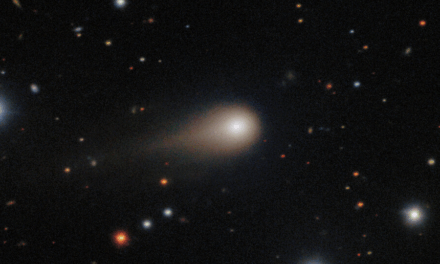Stars revolve around the center of galaxies at a constant speed over a large range of distances from the center of the galaxy. It is observationally found that the stars revolve much faster than expected if they were in the free Newtonian potential. The rotation curve of a galaxy can be represented by a graph between orbital velocity of the stars or gas in the galaxy on the y axis and the distance from the center of the galaxy.
The galaxy rotation problem is the discrepancy between the observed rotation speeds of matter in the disc portions of the spiral galaxies and the predictions of Newtonian dynamics considering the known mass. This discrepancy is thought to be because of the presence of dark matter in the halo. The initial part of the curve represents the massive central part and this behavior is attributed to the presence of black hole.

Rotation curve of a typical spiral galaxy. Lower curve is a predicted motion and upper one is the observed. This discrepancy between the curves is attributed to dark matter.
Evidence of dark matter has been confirmed through the study of galaxy rotation curves. These measurements are on a smaller scale than the galaxy clusters, but gives more detail about the way the dark is distributed.
It is found that the stellar rotational velocity remains constant or “flat” with increasing distance away from the galactic center. This flat curve suggests that each galaxy is surrounded by significant amounts of dark matter. Unfortunately, because gravity depends only on the distance and mass; not on the composition, astronomer are not certain what the dark matter is composed of. It could be in the form of planets, brown dwarfs, white dwarfs, black holes, neutrinos with mass or other exotic particles that have not been discovered in the laboratory yet.






